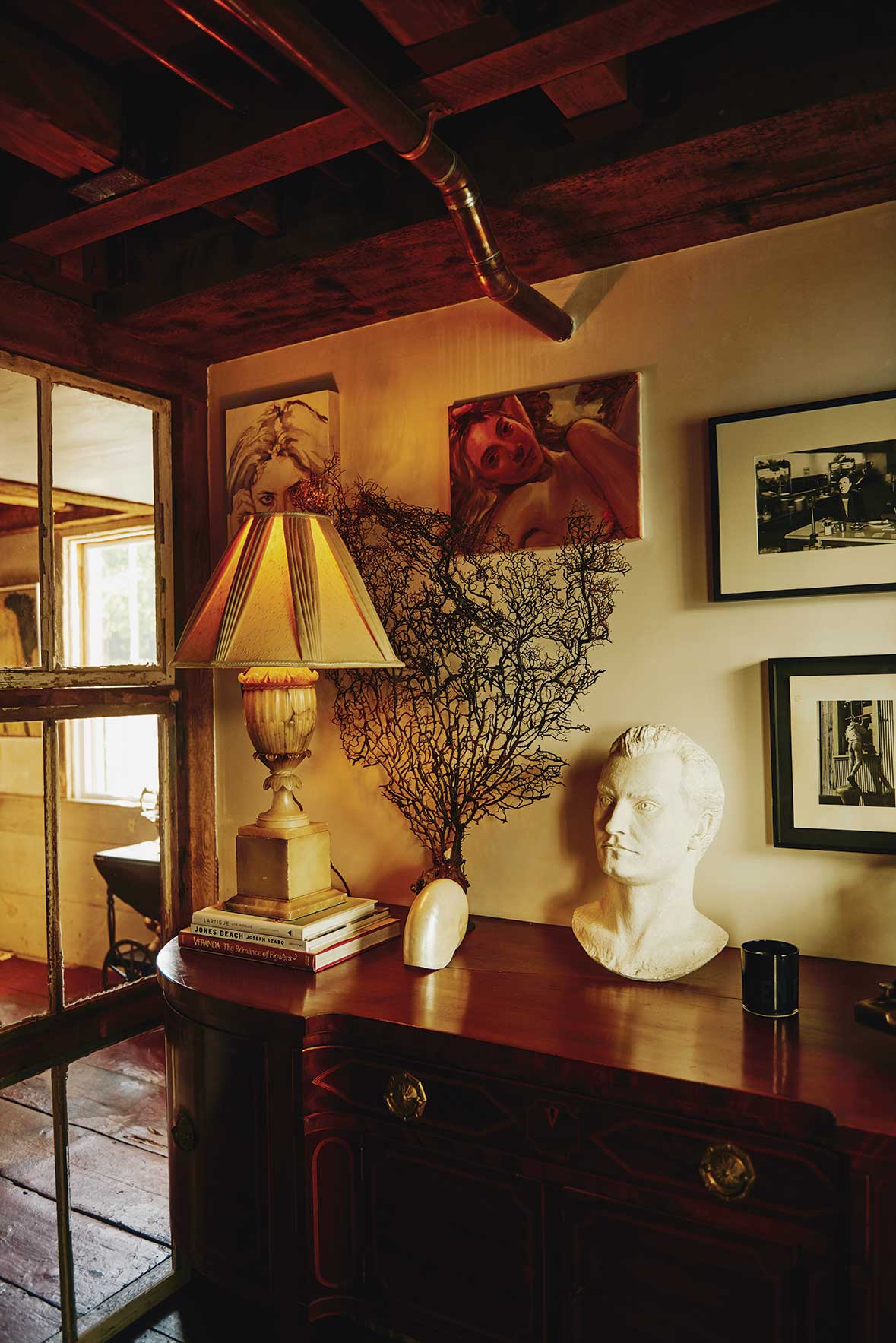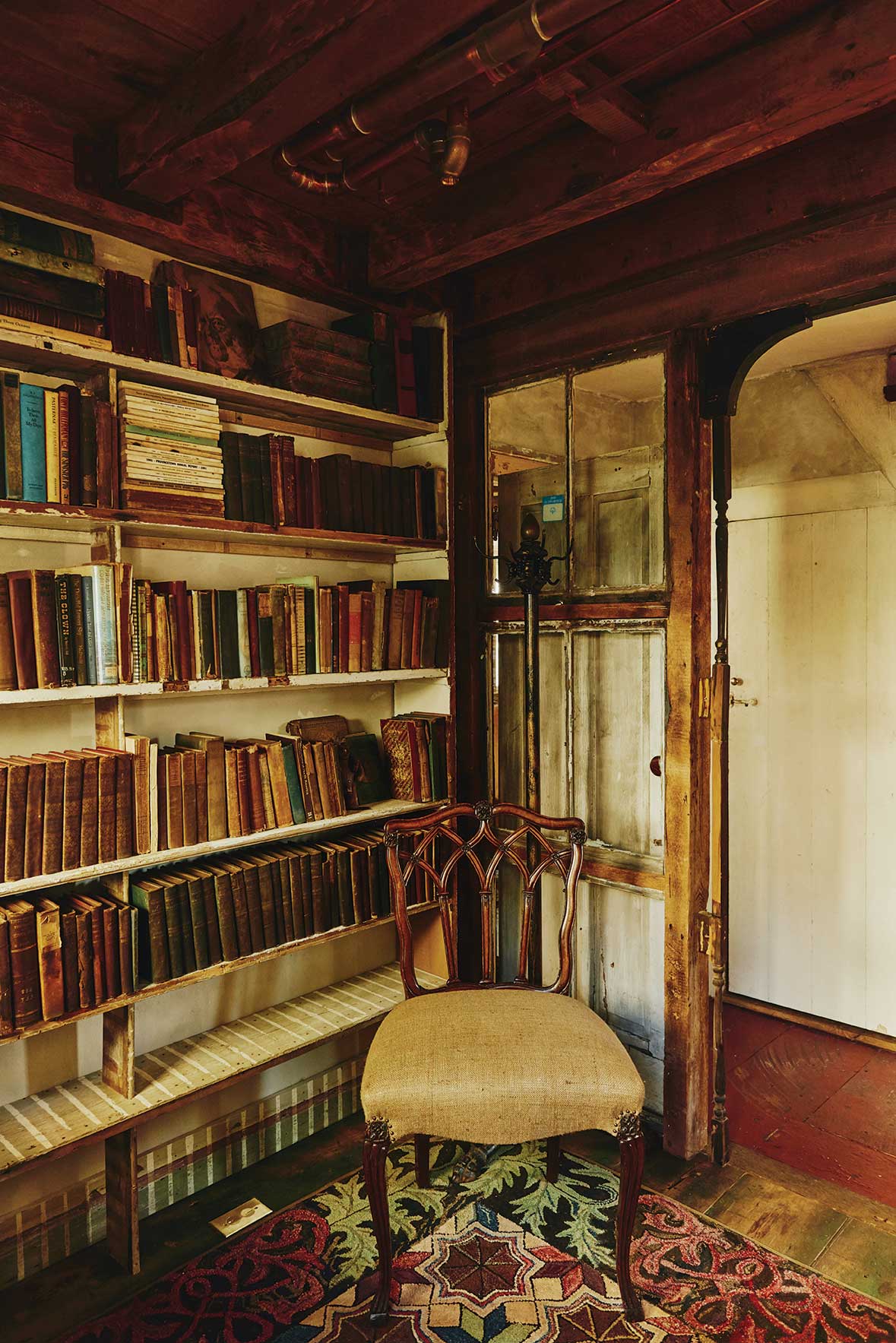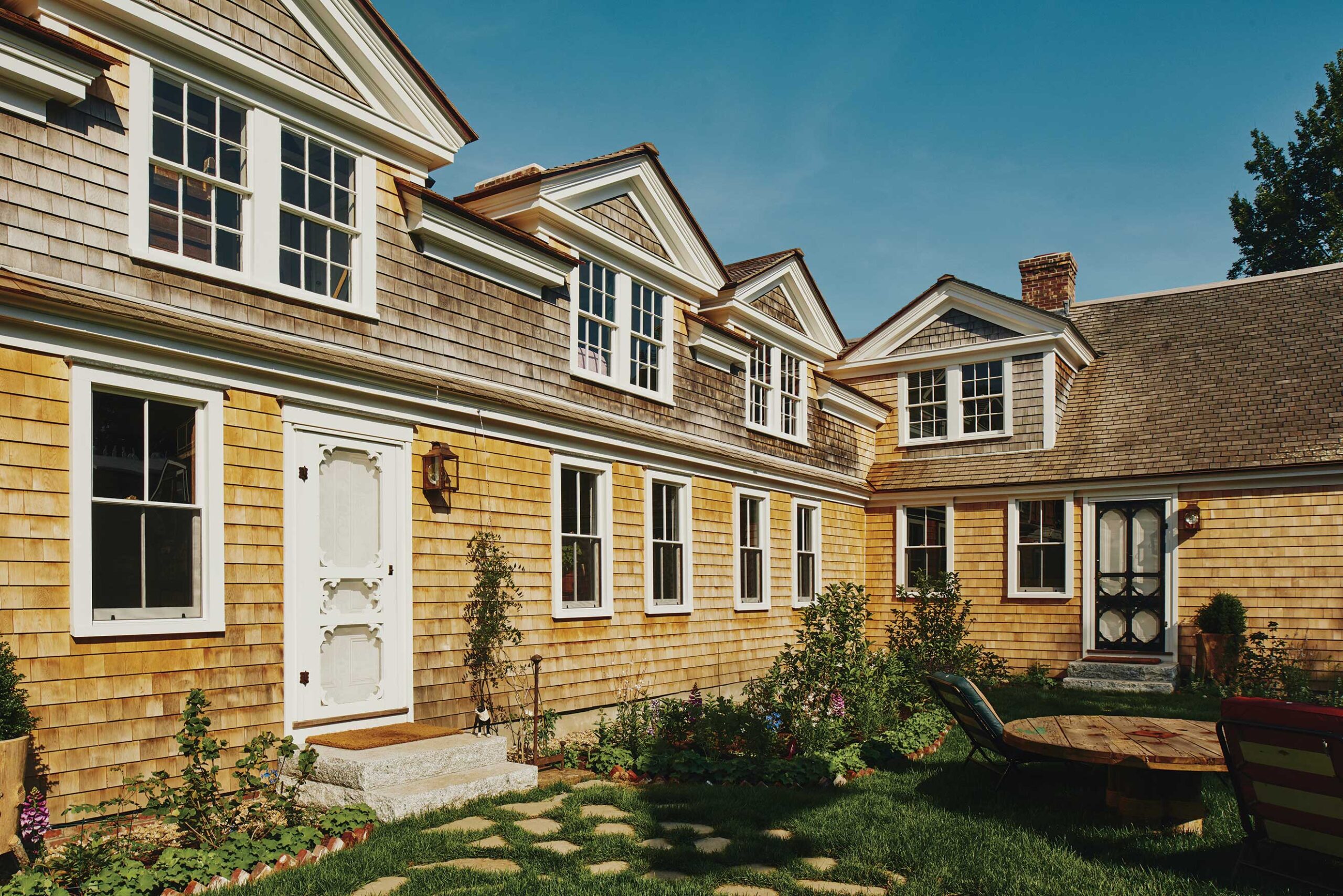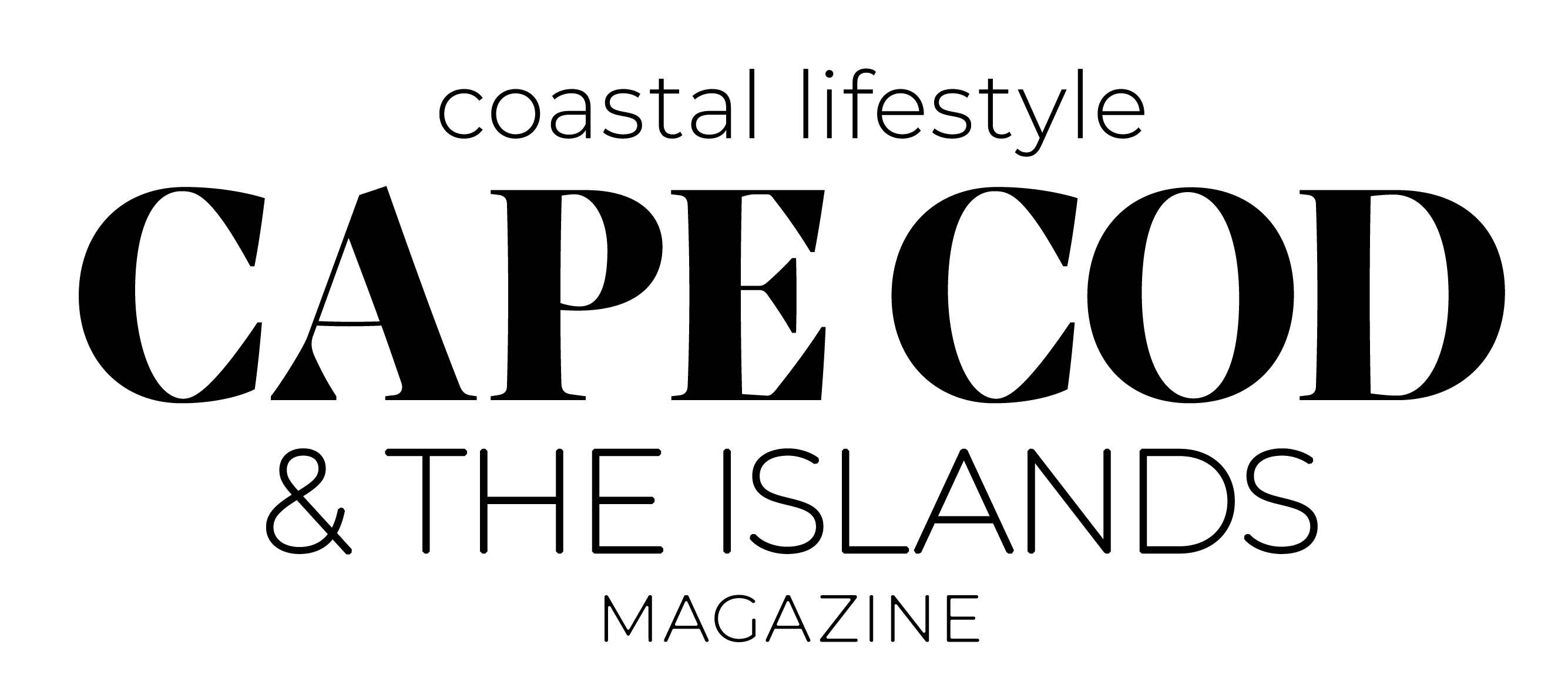A local philanthropist renovates the historic Mary Heaton Vorse house with hopes to reinvigorate a legacy of art making.
by Andre van der Wende
Photographs by Tony Luong
The small sign on the front of the Vorse house in Provincetown reads: “Mary Heaton Vorse,1874-1966, Author, War Correspondent, Labor Journalist Lived Here.” What the sign doesn’t tell you about its namesake is that during the searing summer of 1916, Mary Heaton Vorse opened her home to a number of creatives who left Greenwich Village in search of a change of pace and scenery. “She came here with that whole group of New York bohemians,” says Ken Fulk, the owner of the Vorse house. “Everyone from Edna St.Vincent Millay, Louise Bryant, and John Reed to Eugene O’Neill and Susan Glaspell. All of these characters came to Provincetown and hung out. She was the doyen of that group, and this house was the center of their social life.”
It was a conflation of great minds, and one can only imagine the conversations, but luckily, its history is now a little easier to experience since the house was rescued and restored back, as much as possible, to the home Mary Heaton Vorse once knew. Eschewing the tear down, or fix and flip, Fulk purchased the house for $1.17 million and spent close to $1.25 million on renovations. Now that the project is complete, Fulk has opened the house’s doors to local arts organizations, such as Provincetown Art Association and Museum, Provincetown Theater, Provincetown International Film Festival, and Twenty Summers. Fulk hopes that the Vorse house will be used as a venue to support the local arts scene. “I don’t think of this as our house, I think of it as everyone’s,” he says. “Come with an idea, and we will do our best to support it and see where it all leads.”
”To me, the interiors are as important as the exteriors. The interiors really tell the history of the house and the people who lived in them. It’s so much more interesting and important to me to protect that."
— Ken Fulk


From the outside, a recent coat of fresh shingles and exterior upgrades belie the age of the house, which Fulk estimates to be in the late-eighteenth century. “It’s one of the older houses in town that was part of a series owned by the Cook family who were the big whalers in the east end of Provincetown,” he says. When the whaling industry collapsed, and the last member of the Cook family passed away, Mary Heaton Vorse took on the house where it remained in the family until Fulk’s purchase in 2018.
Inside is a labyrinth of rooms, and each one is furnished with an antique eclecticism reminiscent of its past. It is a house to get lost in, and through each doorway there’s discovery and surprise. The upgrades don’t take over and the rooms feel functional, organic, and warm. The doors and floors reveal as much of the original patina as possible. “Having a house with all this patina is a really lovely way to live,” says Fulk. “If it looks distressed, it is because it came that way.”
Fulk worked with builder and artist Nathaniel McKean on renovations. There were a lot of necessary updates, such as digging 28 feet through sand to lay in support. The brick fireplaces had to be rebuilt, and their mantles were framed from house salvage. Much of the wood was repurposed for the floors and cabinetry, and also to disguise refrigeration and a dishwasher. Each room was restored to its original footprint, and many historic elements remain, such as Vorse’s bedroom on the second floor with a view of the harbor as well as the steep narrow stairs that lead to the second floor’s low ceilings. “To me, the interiors are as important as the exteriors,” says Fulk. “The interiors really tell the history of the house and the people who lived in them. It’s so much more interesting and important to me to protect that.”

Fulk divides his time between San Francisco and the house he owns across the street from the Vorse house. His full-time job is running a successful interior design business, but he is also notable for his philanthropy and ability to draw large donations from fundraising events supporting the arts in Provincetown. He hopes the Vorse house will serve as a venue for the area’s nonprofits to host exhibitions, events, fundraisers, and residencies. “It’s art in all forms, and it’s about building community,” says Fulk. “It’s not meant to be another arts organization. It’s meant to be a community for the arts organizations that are already here.”
So far, PAAM has facilitated a residency program for artists and hosted an exhibition Intimate Companions by Joe Sheftel, which is an engaging show featuring over 30 figurative artists. Future residences are in place, and the education arm of PAAM sends children over to paint in the gardens at a socially appropriate distance. There’s a large screen in the backyard for the Provincetown Film Society to host features, and a string of events and fundraisers stretch into the fall, including a supper series that uses food grown from the gardens on the premises. “Programming at the Vorse house is as full as the circumstances will allow,” says Fulk.
Fulk’s hope is that the house will continue to be a haven for young creatives. “To me that’s exactly what this place is—it’s a place that people who otherwise couldn’t afford to be here can come and stay,” he says. “We need young people here, we need people who are coming to create, who want to be in Provincetown. It’s nice to have these historic places be activated and still be part of the legacy and the ongoing work.”
One hundred years later, the Vorse house is open to artists again. Think of the conversations that will take place, and the art that will be created. It seems Mary Heaton Vorse would be pleased.



